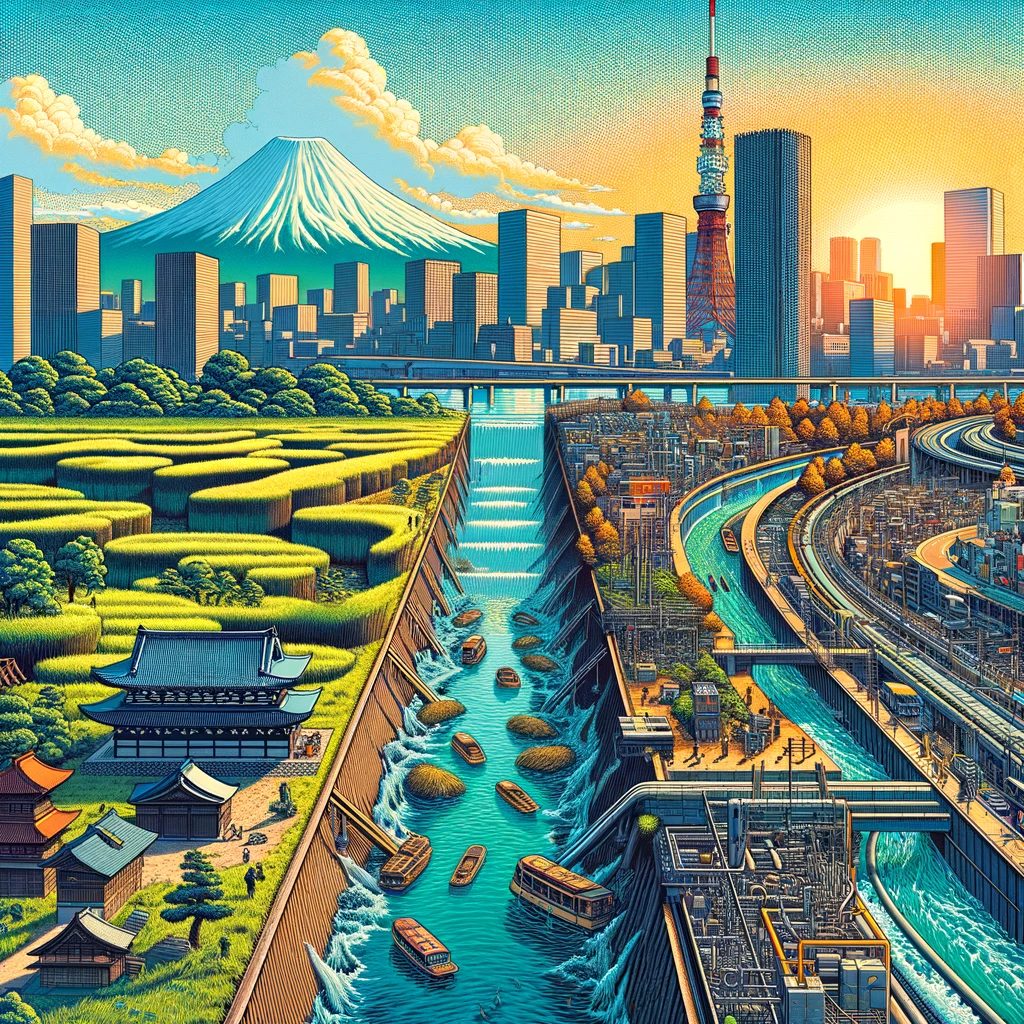Tokyo’s Transformation Through Civil Engineering
In a calm and collected tone, let’s delve into an intriguing discussion about Tokyo’s remarkable transformation into a region with relatively fewer disasters, attributed to extensive civil engineering projects. These projects included the significant relocation of the Tone River, which traditionally flowed into Tokyo Bay, to its current position. This strategic move exemplifies the concept that rather than people settling in disaster-free areas, it’s the application of civil engineering that fortifies a region against disasters, making it habitable.
ほんまに何も知らんのやね。今の東京が災害が比較的少ない地域になったのは、大規模な土木事業を重ねに重ねて、従来東京湾に流れていた利根川を今の位置へと東遷したからです。
災害が少ない地域に人が住むのではなくて、人が住むために土木を以て災害に強い地域にするんだよ。 https://t.co/0dF4jJo3oC pic.twitter.com/bDgW8g0ydl
— 経世済民大学院生 (@LiberalismStu) January 5, 2024
User Reaction:
- LiberalismStu: “Many are unaware that Tokyo’s current status as a disaster-scarce area is due to repeated, large-scale civil engineering works, including the eastward relocation of the Tone River.”
- uIPau9hTV21Dn8c: “History shows that uninhabited areas were prone to disasters. Conversely, Tokyo remains populous because it’s convenient and safe, despite the Great Kanto Earthquake.”
- RYUNPON00: “Huge investments have been made in super levees and underground discharge channels.”
- 3KTTIR54emJ6Z1x: “When Ieyasu arrived in Edo, it was a marshland covered with reeds.”
- sai006394: “Discussing the Tamagawa Josui can lead to doubts about the Tachikawa Fault.”
- miSIdGB9thhVD5Y: “Tokyo, once prone to floods, was made livable through repeated public works.”
- urashima2: “There was an inland sea, Katori Sea, between Chiba and Ibaraki, which was connected to the Tone River.”
- CHT_japan21: “In Osaka, the Yamato River’s course was adjusted, merging with the old Yodo River.”
- qingzangditie: “In 1947, the Tone River levee broke in Kasukabe City due to Typhoon Kathleen, causing inundation.”
- oSRsTJIBK7WOP1P: “Even the Kanda River in Tokyo has undergone significant flood control measures.”
- yhonashi: “The Arakawa Drainage Channel was created as a flood control measure for the Sumida River.”
- kuma_kichi_1Q63: “The habitability of the Kanto Plain and Tokyo owes to artificial waterway alterations and land reclamation.”
- xyGqrs5BaQ66953: “In the Suigo area, the water transport flourished, but lowland farmers had to be ready to flee by boat during floods.”
- Kits88005657: “The Democratic Party government’s shift from concrete to people halted long-term large public works projects.”
- gongon43444: “The eastward shift of the Tone River was initiated in the early Edo period.”
- tohazugatali1: “Such large-scale civil engineering is feasible in Tokyo, but what about remote areas like the Noto Peninsula?”
- zhongnanhai_liu: “The Tone River Eastern Relocation was a major Edo-period public work, with complex water system interconnections.”
- N1809031125: “Civil engineering is a noble profession, shaping lands for human habitation.”
- yamanenokurashi: “Learning from history involves using the past to imagine the future.”
- R3NXyLf7BMXb1rn: “The Hiroshima disaster was due to housing development in historically flood-prone areas.”
- kamenotehonpo: “Okayama’s urban area is protected by the Hyakken River, created during the Edo period.”
- uIPau9hTV21Dn8c: “Lands with ‘demon’ in their names tend to be disaster-prone, a national trend observed since the high economic growth period.”
- 浦島次郎: “The majority of Katori Sea was filled due to sediment from Mount Asama’s eruption.”
- tbnciao13: “Old Yodo River (now O River) in Osaka used to merge with Yamato River.”
- タク: “Even smaller scale floods in Tokyo, like that of Kanda River, have been addressed.”
- 洋梨: “The Arakawa River (Arakawa Drainage Channel) is an artificial river created for flood control.”
- ベナプルズ: “In the Suigo area, water transport thrived despite the flood risks.”
- gongon: “The person responsible for shifting the Tone River might have also overseen the Tamagawa Josui construction.”
- 中南海流水音: “The Tone River project was a landmark public work of its time.”
- 南原四郎: “The Hiroshima disaster was due to building houses in a historically known flood-prone area named Hell Valley.”
To conclude, these insights provide a fascinating glimpse into the transformative power of civil engineering in shaping Tokyo’s landscape and mitigating disaster risks. The collective narrative underscores the vital role of thoughtful urban planning and infrastructure development in enhancing urban resilience and livability.










